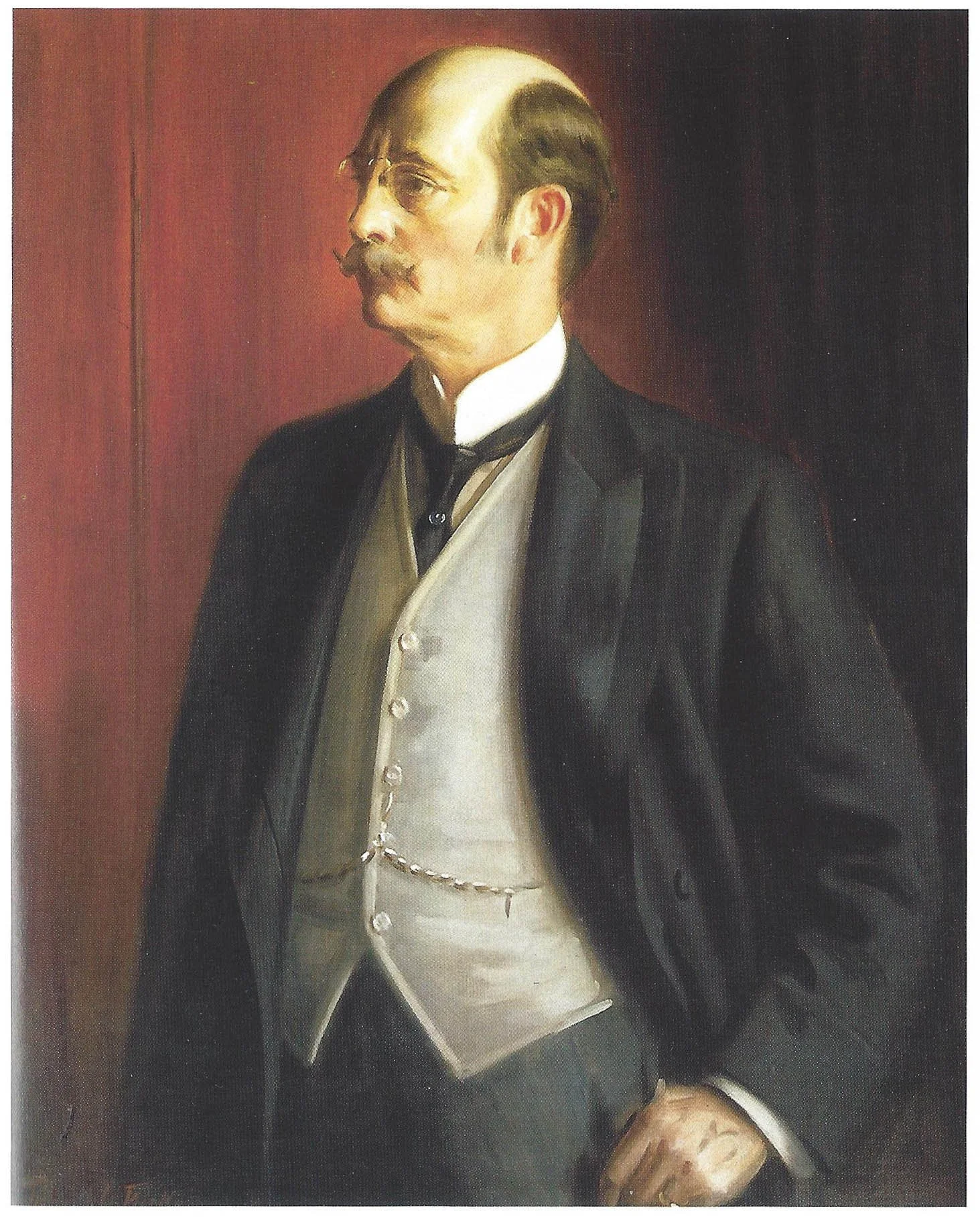David Z. Norton
(1851-1928)
Herman Gustave Herkomer (American, 1862-1935)
The Union Club of Cleveland
David Z. Norton played an indispensable role in the history of the Union Club of Cleveland. He was not simply one of only two three-term presidents in the club's history but helped to secure the present site of the club on Euclid Ave. from his mother Mrs. William B. Castle in addition, he served as Chairman of the Building Committee from 1902 to 1905, during the rollicking ride otherwise known as the construction phase of the present Charles Schweinfurth designed clubhouse
David Norton was a native Clevelander who was a supremely capable and likable businessman with an outstanding instinct for prime opportunities as well as a truly unusual knack for making useful contacts and falling into the path of Lady Luck when she was feeling most generous. Norton got his start as a messenger for Commercial National Bank in 1868 and by the age of 21 had advanced the position of Cashier as Citizens Saving and Loan Company. He quickly became known as one of the banks “bright young fellows” and in 1876 married one of the daughters of William B. Castle. The latter served as one of the directors of Citizens Saving finance board and had been a highly effective mayor of both Ohio City and Cleveland proper during the 1850’s. Norton and Mary Castle had three children. Mr. Norton served as president of the Union Club from 1908 to 1909. Their two sons Robert C Norton and Lawrence H Norton both became presidents of the Union Club
Around the time he married, Norton felt that his name could use a little more lustre through the addition of a middle initial and chose Z, refusing altogether to disclose what the letter stood for. As a result his wife and subsequently his friends drifted into nicknaming him “dizzy”, a misnomer to be sure. There was nothing dizzy about Norton which became more than apparent by 1890 when John D. Rockefeller Senior urged him to resign from the bank and joined forces with Earl W. Oglebay in organizing Oglebay Norton and Company, one of the most distinguished iron ore houses in Cleveland. Almost immediately upon becoming partner Norton secured a contract to organize all of Rockefeller’s iron ore properties in the rich Mesabi Range under the Lake Superior Consolidated Iron Mines and to act as manager and sales agent. He broadened the company's geographic range by becoming a sales agent for Cuban and Canadian or companies and acquired a fleet of 11 lake freighters. Interestingly, the last purchase took advantage of some of the developments his father-in-law had brought about while mayor of Cleveland in 1855 that is cutting a shorter channel between the Cuyahoga River and Lake Erie opening the river to larger ships and building a suitable harbor for large vessels on the lakefront
In this portrait by Herman Herkomer a Cleveland board portraitist who belonged to his distinguished artistic family originating in Germany Norton’s thoughtful nature comes to the fore by showing Norton in a profiled view with his hands in his pockets Herkomer creates a portrait of a self-containment which underscores the sitters considerable abilities to think patiently through a complex problem before reacting, and to keep and trust his own counsel although no first hand documentation on the Commission of this portrait exists it seems likely that the artist produced it from life although Herman Herkomer had left Cleveland permanently in 1883 when the entire Herkomer family decided to relocate to England. He did occasionally return to his home once in January 1894 and for a much longer sojourn in 1910 to 1912 presumably this extended stay coincided with the opportunity to undertake a number of notable portrait commissions during this phase of his portrait career Herkomer favored an eye popping red background which functioned not only to give the paintings a sense of opulence and chromatic dazzle but also to enhance the lovely skin tones he was capable of achieving
In the tradition of many of the union clubs founding members David Norton was noted philanthropist in the city where he made his personal fortune his particular generosity to the Cleveland Museum of Art and the Western Reserve Historical Society was marked by two major gifts to the former he donated his collection of Japanese art and to the latter his large holdings of Napoleona. Following his death in March 1926, the Cleveland Museum of Art Bulletin had noted Mr. Norton was interested in the museum long before it was built for on the occasion of a visit to Japan with Mr. Dudley P. Allen he purchased a collection of Japanese inro which was presented to the museum among its earliest gifts at a meeting in May 1916 and was included in the inaugural exhibition. To this collection he added in April 1917 a collection of 52 Japanese bronze mirrors in June 1919 a collection of 299 Japanese sword guards, and in February 1923 he presented an important painting of the Grand Canal by Felix Ziem
